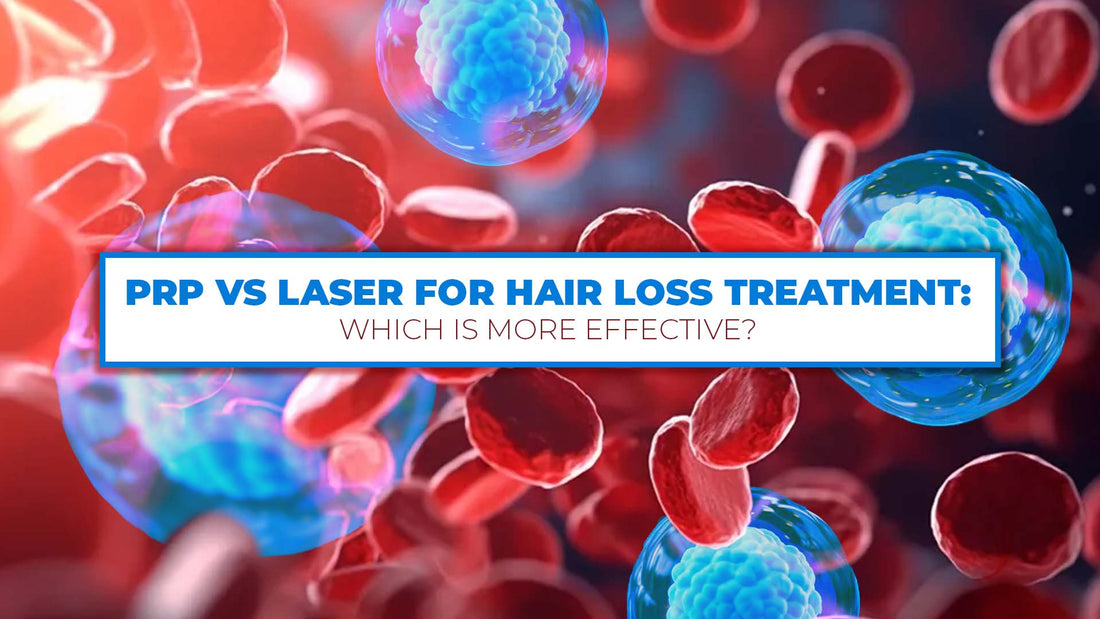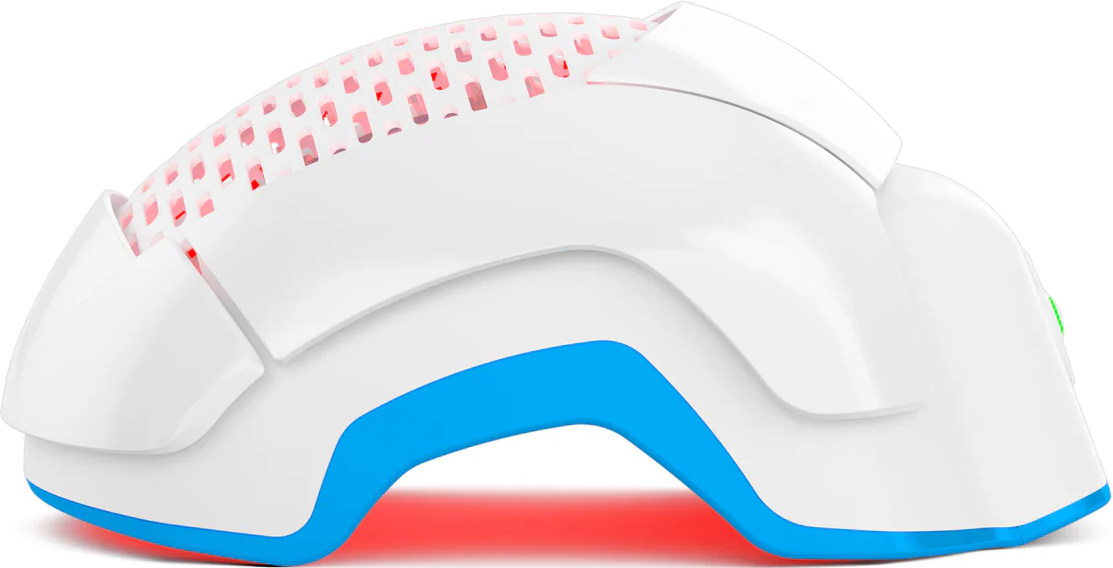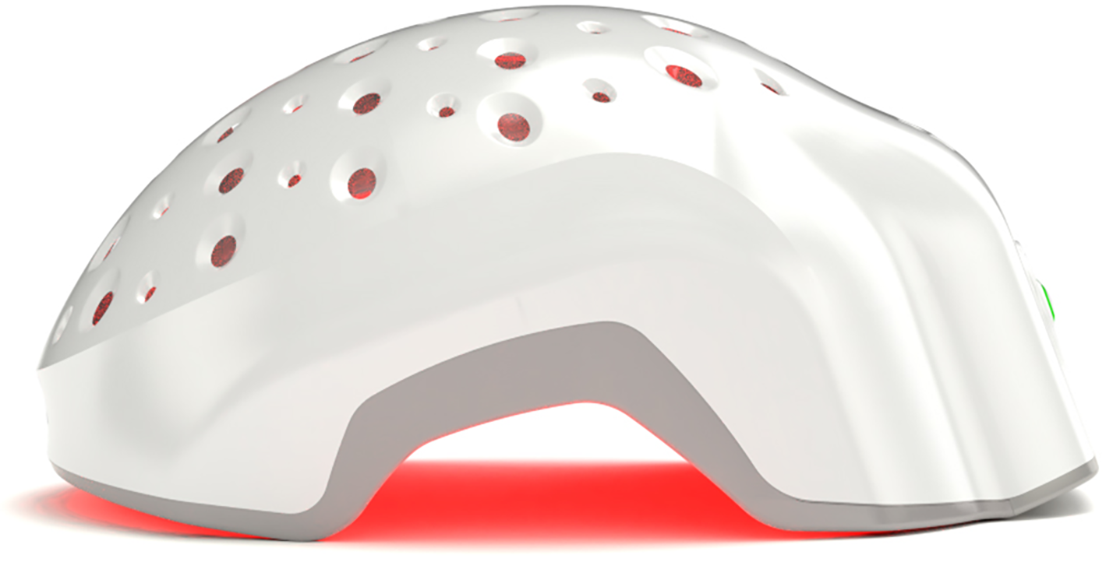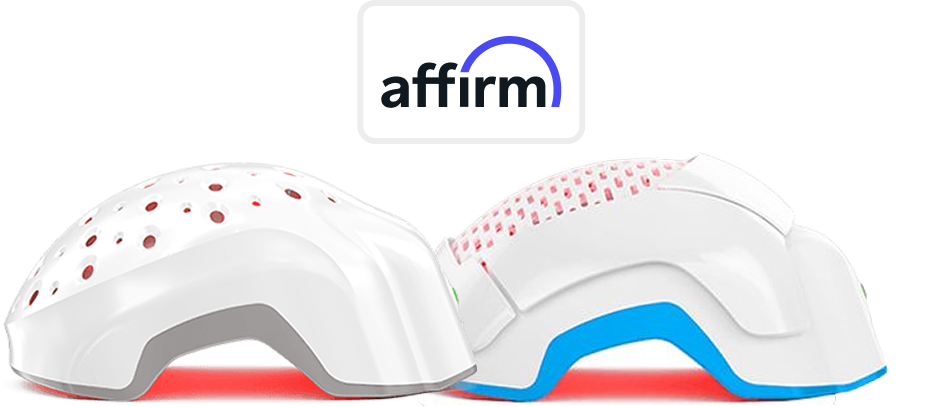When it comes to hair loss, choosing the right hair restoration treatment can feel like picking between a needle and a beam of light—literally. The debate between PRP vs laser for hair loss has gained plenty of traction, with both treatments offering a path to thicker, healthier hair. But here’s the million-dollar question: which one is more effective?
Look, it depends on what you’re looking for—and how much patience (or money) you’re willing to invest.
PRP (Platelet-Rich Plasma) involves using your own blood’s growth factors to stimulate hair follicles, while laser therapy (Low-Level Laser Therapy or LLLT) uses light energy to encourage blood flow and wake up those stubborn follicles. Both sound pretty fancy, but don’t be fooled by the glamor. These treatments are rooted in solid science—and they’re fighting for the crown.
So, let’s take a look at PRP vs laser for hair loss by comparing how they work, how long they take, and most importantly, how well they stack up against each other.
What is PRP Therapy and How It Works for Hair Loss?
PRP therapy harnesses the power of your body’s own blood. The process involves drawing a small sample of blood, placing it in a centrifuge to concentrate the platelets, and injecting the platelet-rich plasma into areas of the scalp affected by hair thinning. These platelets contain growth factors that help regenerate damaged tissue and stimulate dormant hair follicles.
PRP is particularly effective for androgenetic alopecia, helping to restore hair in both men and women. With regular sessions, many patients see thicker, healthier hair within months. The treatment is minimally invasive, but it does require multiple sessions to maintain results.
What is Laser Therapy for Hair Loss?
Low-Level Laser Therapy (LLLT) uses specific wavelengths of light to stimulate hair follicles. Whether through caps, helmets, or combs, this technology promotes blood flow to the scalp, revitalizing hair follicles and extending the hair growth phase.
Laser hair restoration treatment is FDA-cleared and can be done at home, offering a convenient solution for hair thinning. With consistent use—usually 20-30 minute sessions several times a week—many users experience noticeable improvements within 3 to 6 months. It’s non-invasive and painless, making it an appealing option for both men and women with early-stage hair loss.
5 Major Differences Between PRP vs Laser Therapy for Hair Growth Treatment
Hair loss treatments can sometimes feel like a gamble, especially when choosing between two heavyweights: PRP (Platelet-Rich Plasma) and Low-Level Laser Therapy (LLLT). Both have their strengths, and while they target hair regrowth, they do so in very different ways.
To help you decide, here’s a breakdown of the five major differences between PRP vs laser for hair loss, with plenty of science to back it up and just a sprinkle of humor to keep things light.
1. PRP vs Laser Therapy: Treatment Process
The hair loss treatment process for PRP therapy is a bit more complex than laser therapy. It involves drawing blood (yes, your own), spinning it in a centrifuge to separate the platelet-rich plasma, and then injecting that plasma back into your scalp. While this might sound like something out of a sci-fi movie, it’s a scientifically-backed method designed to stimulate hair follicles. But here's the catch—it requires a clinic visit, needles, and a trained professional to perform the procedure. Not exactly a cozy afternoon at home.
On the other hand, Laser Therapy (LLLT) lets you skip the needles and the clinic altogether. With wearable devices like laser caps or helmets, you can treat hair loss from the comfort of your own couch. Each session typically lasts about 20-30 minutes, and you can do it while watching Netflix. It’s non-invasive, painless, and doesn’t require any clinical visits—perfect for people with tight schedules.
If you prefer the idea of boosting your hair growth without needles, laser therapy might be your go-to over PRP therapy. But if you want something more targeted and don’t mind the clinic trips, Platelet Rich Plasma therapy could be your pick.
2. Effectiveness of PRP vs Laser for Hair Loss
When it comes to results, PRP may offer some noticeable improvements, though its success rate in terms of new hair regrowth is relatively modest. Studies show that only around 15% of PRP treatments are successful in promoting new hair growth, though patients often report some increased hair density and thickness within a few months of starting therapy. PRP works by delivering growth factors directly to the scalp, stimulating existing follicles and promoting faster regeneration, making it a more targeted option for conditions like androgenetic alopecia.
Meanwhile, laser therapy (LLLT) also brings solid results, particularly for broader areas of thinning. With a success rate reported to be over 90% when used consistently, LLLT offers gradual improvements, typically showing results between 3 to 6 months. Low-Level Laser therapy works well on larger areas and is even more effective when combined with other treatments, like minoxidil. So, while PRP may show faster initial effects on targeted spots, laser therapy delivers a more gradual but comprehensive approach to hair thickening—especially for widespread thinning.
3. Cost Comparison: PRP vs Laser Therapy
Now, let’s talk money. PRP isn’t exactly cheap. Each session can set you back anywhere from $500 to $1,500, depending on your location and clinic. Most patients need several sessions over a few months, with maintenance treatments every 6 to 12 months. The price can add up quickly, especially for long-term treatment plans.
In contrast, laser hair restoration treatment requires a higher upfront investment—laser devices range from $300 to $1,000—but it’s a one-time purchase. Over time, LLLT can be more cost-effective, especially for those looking for a long-term solution to hair thinning.
PRP costs more in the long run due to repeated sessions, while laser therapy devices offer a one-time purchase option, making it the more budget-friendly choice for long-term use.
4. Side Effects and Risks
There’s no such thing as a side-effect-free treatment, but some options are easier to live with. PRP therapy comes with its fair share of side effects. Since it involves injections, there can be discomfort, bruising, or swelling at the injection site. And, of course, any time needles are involved, there’s a risk of infection or injury—although it’s generally safe when performed by a qualified professional.
On the flip side, Low-Level Laser Therapy takes the crown for safety. It’s non-invasive, painless, and carries minimal risk. No needles, no downtime, and virtually no side effects, making it one of the safest hair loss treatments around. Plus, Low-Level Laser Therapy (LPT) represents the latest proven technology to help hair loss sufferers regain their hair—without having to settle for messy prescription drugs with potential negative side effects.
Look, if PRP injections make you queasy, laser therapy might be your safer bet for hair loss treatment. PRP comes with some risks due to its invasive nature, but it’s still a well-established treatment when performed correctly.
5. Convenience and Comfort
When comparing the convenience of both hair loss treatments, laser therapy wins hands down. PRP treatments require regular clinic visits, which can be time-consuming, not to mention the discomfort from injections. Some people find the needles a deal-breaker, and for those who value comfort, the thought of repeated sessions at the clinic might not be so appealing.
LLLT, however, offers complete convenience. Whether you're reading, working, or binge-watching your favorite series, you can slip on a laser cap and let it do the work. It’s a painless, hassle-free option that fits into your daily routine with minimal effort.
Conclusion
In the battle of PRP vs laser for hair loss, there’s no one-size-fits-all answer. If you’re looking for quick results and don’t mind clinical visits, Platelet Rich Plasma therapy may offer the faster route to fuller hair. On the other hand, if you want a convenient, non-invasive treatment that you can use at home, laser therapy is an excellent choice. For many, the best results come from combining laser hair devices like Theradome & PRP for maximum effectiveness.
Ultimately, the right treatment depends on your hair loss stage, your budget, and how much time you’re willing to commit. Whichever route you take, remember: consistency is key to keeping those follicles in shape.






















